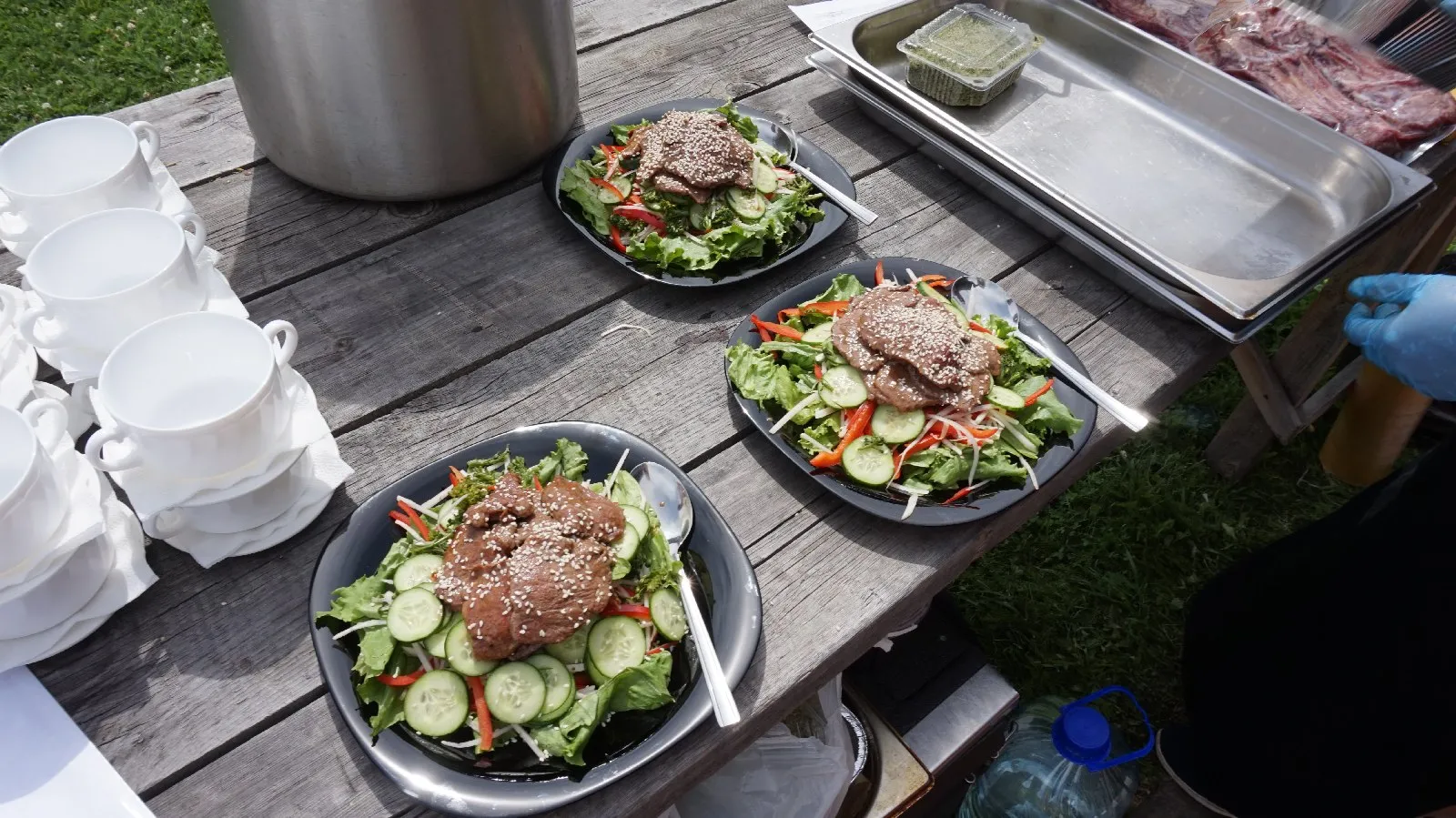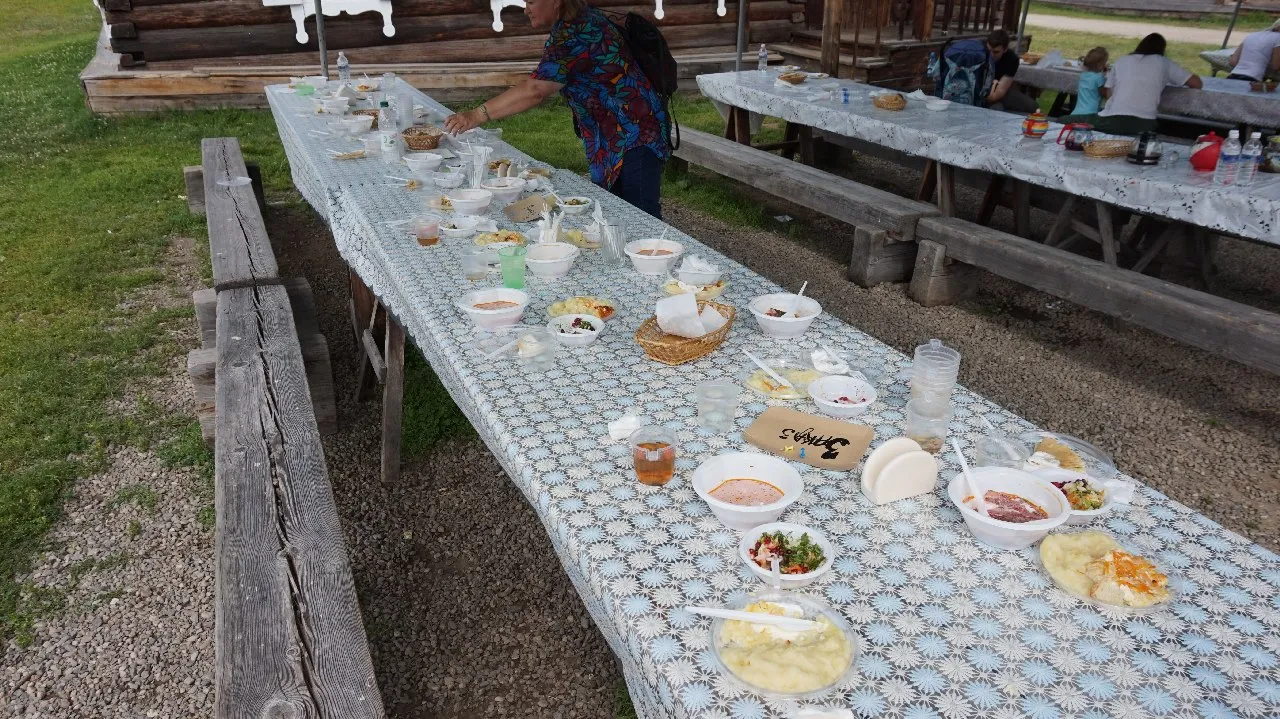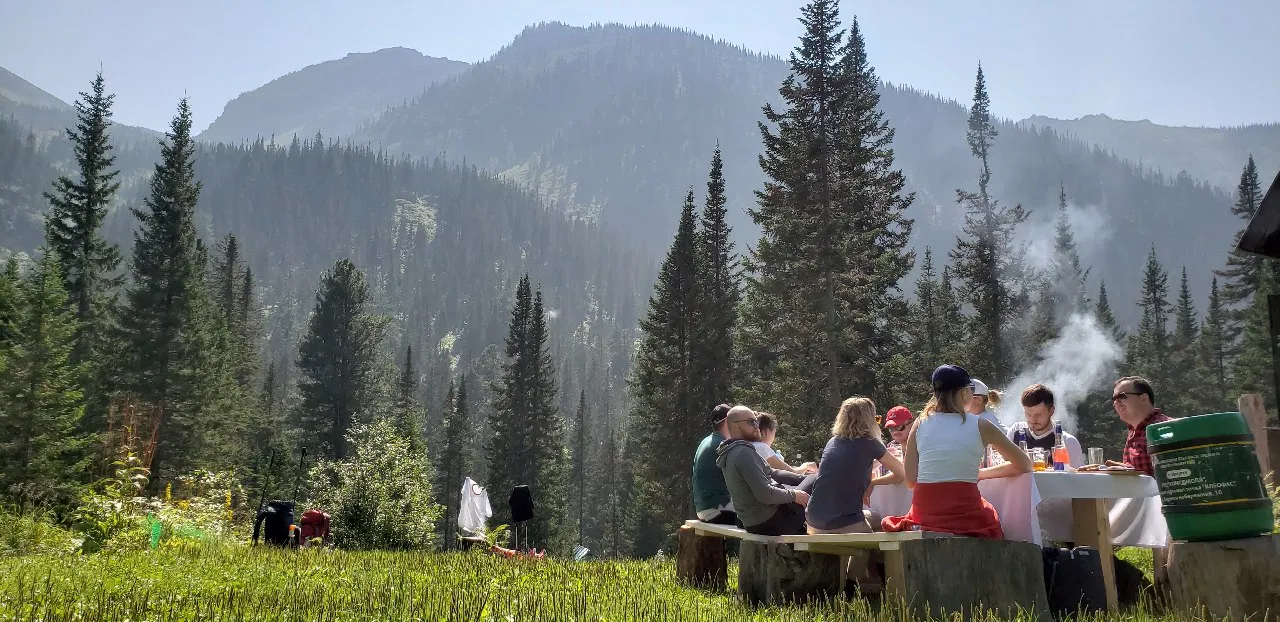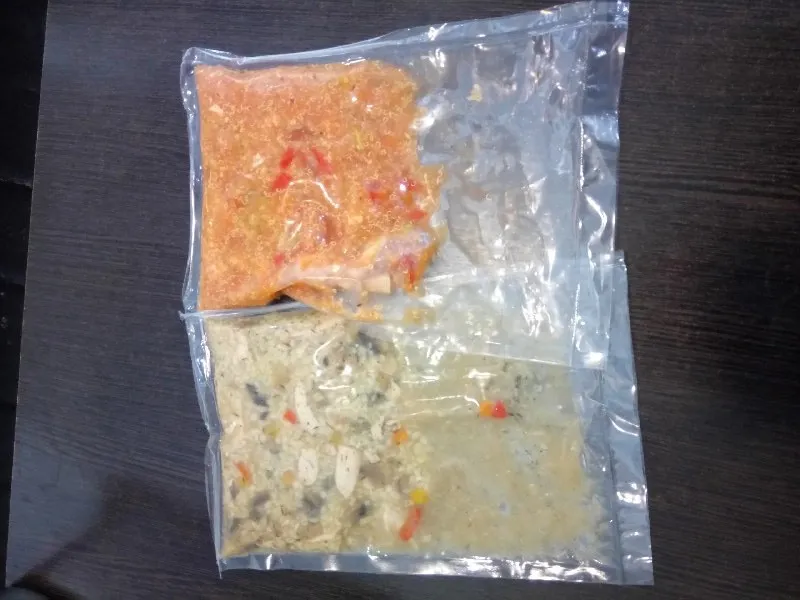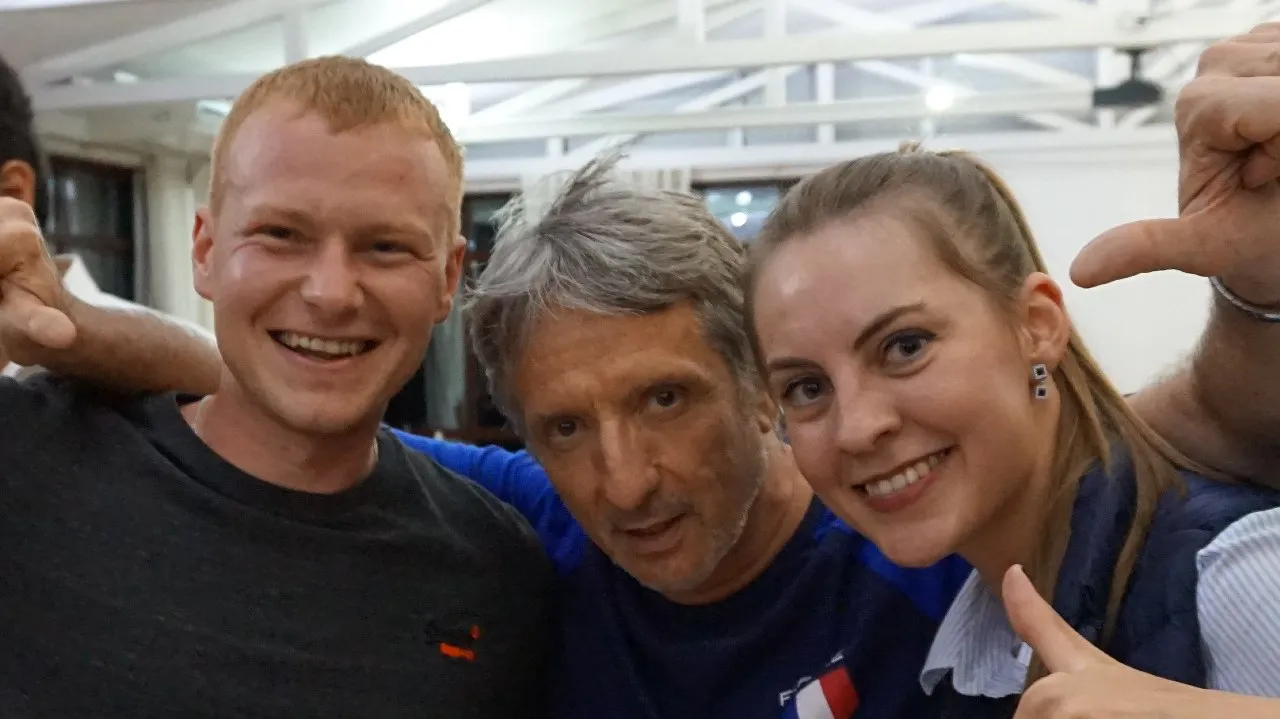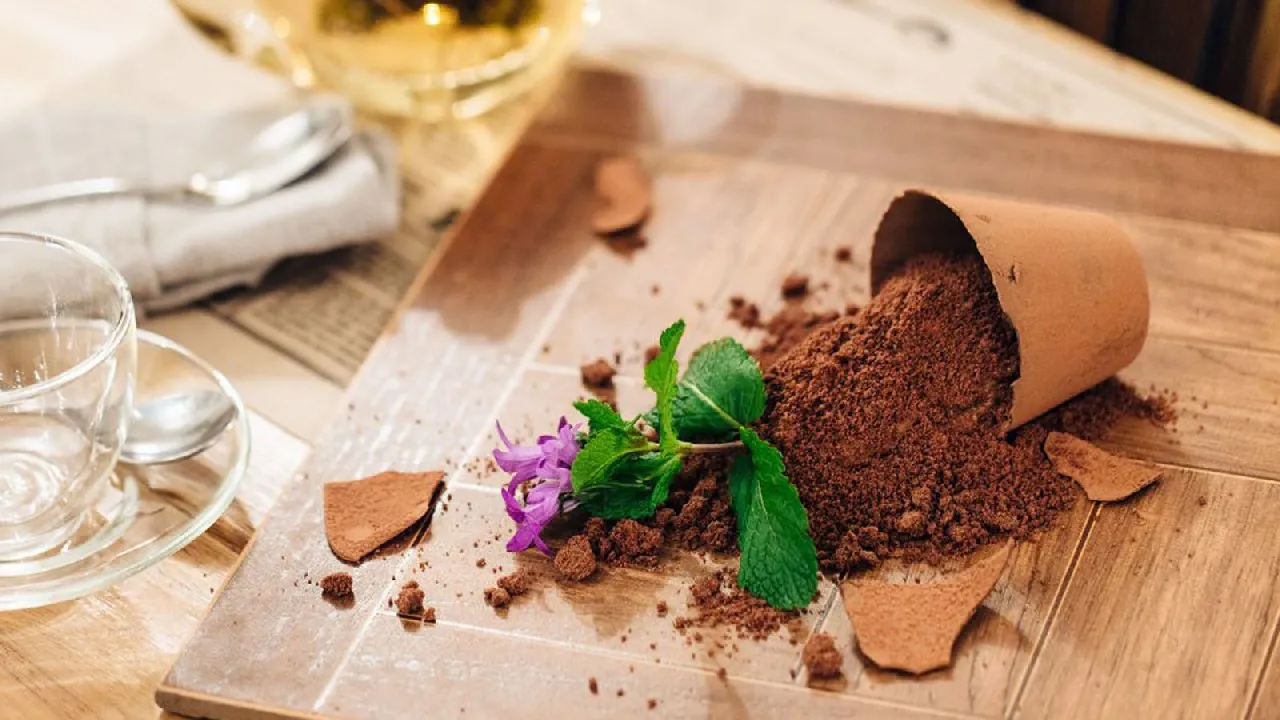Forget about gastro-tourism in Russia for now. First, stop serving borscht guests in plastic plates.
For the first time, we offered the customer to develop a personal travel menu after I was poisoned in a cafe, which is considered to be the visiting card of Lake Baikal. We found the chef and worked out with him breakfasts, lunches, dinners, snacks — agreed on everything that had to get into the mouth of the guests. After we published a report about this and it got into the media. Then, in some time we were invited to various events as gastro experts and booked tours with an emphasis on national cuisine. This is both pleasing and upsetting. Is no one else in Russia doing this?
We do not have problems with a variety of food, there is simply nowhere and no one to cook it.
The last four years, in our travels, the elaboration of the menu is the same integral element as hotel booking and transport rental. It is not enough for our guests to eat Baikal omul on a newspaper or to chew a claw of Kamchatka crab served on a plastic plate. We spend on catering for 10,000–15,000 dollars per week of travel for a group of up to 10 people. And that's without taking into account logistics and team work.
For each group, the menu is developed individually, often dishes are selected individually for a guest. This is especially true if a person does not eat meat or is allergic to lactose, for example. In mid-July, we ended the 10th anniversary of the gastronomic tour and I can say that the delicious food is able to neutralize the lack of infrastructure, bad weather, errors in timing. But even the most comfortable car and luxury hotel does not rehabilitate you if you feed people badly.
Our first gastro tour lasted 12 days. The guests changed 9 locations and tried the kitchen from 3 different chefs. A total of 112 dishes and snacks, accompanied by 32 drinks. We cooked in the taiga, arranged a culinary masterclass, got food by SUVs, on water and by helicopter. Because of the lightning that hit the transformer, we were left without a refrigerator and electric stoves. In the intervals between changes of dishes, we went up to the mountains, floated on a mountain river, rode jet skis and steamed in the bath.
The most difficult in all this was to find the chef. We spent 2.5 months on this. All chefs with whom we usually work were busy: went to the dacha, night shift, cut off a finger. We made up a menu with my wife and began to look for people from outside. After talking with a couple of candidates from the best restaurants in Irkutsk, I had the impression that I was hired to them.
They said, “I cook only according to my menu,” someone was indignant that it was necessary to work until one o'clock in the morning, some hesitated reading in a menu Bechamel, someone didn't want to cook with butter and immediately offered cheap margarine.
The problem was not that some of them did not know how to cook, although this is not excluded. But it was in the absence of desire to work responsibly: to call back in time, to adapt to the client, not to steal money on the purchase of products.
After we chose the chefs we faced the second problem — the lack of infrastructure. There is no difficulty in feeding guests in Rostov or Krasnoyarsk. But when you go outside the city, you get into the stone age. You're left alone with a raw piece of meat, matches and a pot.
Initially, at the planning stage, we made a mistake ourselves. Having a vague idea of the technological process of cooking and storing food, we made a menu on our own. When our chef saw the menu, he had a cramp on his face. The first thing he asked, “Do I understand right that on location we won't have a fridge and even there won't be electricity?” I said, “Yes,” and then he became completely sad.
We got out with the help of Sous Vide, gas refrigerators and isothermal boxes. I'm even glad that we made a mistake and made a stupid menu then. But today we can cook anything even in the taiga, 200 km from the nearest supermarket.
We must accept that the world is moving forward. Fish soup cooked on the fire and meat on the coals is quite good, but we want something new.
The novelty of this season is the use of Sous Vide for the hiking menu. Sous Vide is a cooking method in which meat or vegetables are placed in a plastic bag with pumped air and slowly prepared at a relatively low and precisely controlled temperature. In the movie Burnt with Bradley Cooper, the main character, a follower of the old school, is experiencing a creative crisis that does not allow him to “catch” a new taste and get a third Michelin star. Just Sous Vide helps him.
When our chef brought quinoa with turkey and bulgar with chicken in “condoms”, it did not look appetizing. After it turned out in the plates, a rich smell of vegetables, spices and meat went. Not a drop of oil and no roasting. Everything was prepared in a vacuum at low temperatures — all the taste and nutrients of the products remained inside. None of the products lost texture, elasticity and shape. So you can cook almost any dish.
Also, there are two more advantages of Sous Vide. Dishes are easy to transport, and in a vacuum, their shelf life increases several times. Now, to feed guests with tasty and useful food we only need to boil the water in a pot, throw the packets there and wait 10 minutes.
We know how to cook deliciously, we do not know how to sell.
Baikal, Kamchatka, Sochi, Altai are united by the absence of gastronomic tourism as a direction. It seems to exist, but it does not. Just eating in a restaurant, even a delicious national dish, is not a gastronomic journey. To understand the difference between developed and developing gastronomic tourism, we can compare for example Russia and Italy. So the differences will be more obvious.
Gastronomic tourism is not based on food, but on gastronomic traditions and their proper advertising. Italian pizza and pasta are eaten all over the world, and the omul of hot smoked and Altai cheese can only be tasted at the place of their preparation.
Gastronomic tourism does not consist only of endless eating of different dishes. This concept includes:
- culinary masterclasses
- gastro-shopping
- participation in the technological process of food production: cheese factories, wineries, chocolate production, etc.
- tastings
- visiting markets with local products
- gastro-festivals
- meeting with famous chefs
- visiting bars, restaurants and cafes with local cuisine
Even fishing and berry picking can be part of a gastro tour.
Recently we returned from a gastronomic forum in Buryatia. There we met with the professor of the Hong Kong Polytechnic University Vantani Suntikul and the chef of the restaurant Cristal Room Baccarat Moscow, the owner of Michelin Star Michel Lenz. They recommended us to focus not only on dishes, but also on their semantic presentation. Now in our travels, a plate with food is not just put on the table. All our chefs tell the guests how and from what everything is cooked. Where did the thyme grow, how many days was the lamb, before we cooked it and why the cream sauce with prunes is served to the rabbit.
Today, travels are not connected with the discovery of new countries, they are aimed at studying the already discovered countries. The cuisine is one of the most accessible ways to do this.
When you think about it, most of the travel is movement and food. We reached the city, ate, went to a forest glade, ate, climbed a mountain, ate again. Sitting at the theatre or at the concert, in half an hour of the first act a lot of people are waiting for the intermission to attack sandwiches with a weekly pink salmon.
The average tourist can save on excursions or shopping, but not at dinner. Therefore, the traditions and public relations of local cuisine should be so strong that a guest during a trip across Russia ate a stuffed sturgeon with mushrooms and drank vodka, but not hamburgers with cola.
Bloggers and rating TV programs should be used to form a positive image. But not to cause heartburn.
The next thing that we do not pay attention to and do not take control — it's TV shows and bloggers. Have you seen the winter issue of Orel I Reshka on Lake Baikal? (the most popular TV show about travel in Russia). Our negligence combined with their high ratings make the regions anti-advertising. Look at Topalov, who meets with a shaman. It seems that the woman who imitates the shaman just passed by and was invited to participate. In the frame, she holds a cottage cheese and some white substance in a box wrapped in plastic bags in a hurry. They could at least put it in a cup.
It can be seen that Vlad is squeamish about drinking from plastic cups. Just in case, he says, “Is it cow's milk?” To which the “shaman” responds to him, “Yes, this is normal from the tetra package” What tetra package? It should be milk from a sacred cow grazing on the virgin Buryat land, drinking spring water and chewing ecologically clean grass from the Barguzin Valley.
In the case of Regina, the TV crew tried to show that Baikal was mystical and mysterious. Some amateur dances, a burning fire in children's pots and a fireman, which almost burned the leader alive. It looks cheap. For 7 years of work, our guests ordered such obscurantism a couple of times and they always said something like, “It didn't meet the expectations. It would be better just to watch the TV or go to a restaurant.”
The one who developed the menu for Todorenko, obviously wanted to surprise everyone with Buryat cuisine. A frozen roll of horse liver and fat is served on the table. “The food is chilling, and it tastes like you're just eating ice” — the host gave an assessment. Then the shashlik of lamb liver in fat was given to taste, “The taste as liver it is in Africa liver. But it might be a little more tender and a little bit bloody. Frankly speaking, I'm full of local delicacies!” — Regina said, having tried Arbin. In conclusion, the insides of the ram were brought. Regina hesitated for some time at the sight of this mess, and restraining vomiting, refused to eat the entrails.
No one said it was not tasty, but the serve was not appetizing. In Iceland, there is a delicacy — hakarl — rotten meat of the Greenland polar shark. The smell of this dish is such that when eating it you need to plug not only the nose, but also the eyes. Despite this, tourists try it with pleasure. Because they do not serve rotten shark carcass entirely, and delicately cut the meat into small cubes. They are clung with toothpicks, plug the nose and washed down with Brennevin — Icelandic potato vodka. Pleasure costs 70–100 euros!
Many regions of Russia understand that the presence of gastronomic brands is a magnet for tourists and their money. It is necessary to pay more attention to top bloggers and rating programs such as Orel I Reshka, Eda Ya Lublyu Tebya, Poedem Poedim. We need to use them to create a positive image. Not to cause heartburn. Don't we have talented chefs and delicious dishes?
It's never too late to build gastronomic tourism, it's just that everyone should work on this together according to a prearranged plan.
If we want to make Russia a country, with the mention of a resident of Paris, New York or Harare, had associations with delicious food and drooling, it is necessary to cooperate with the Ministry of Culture, Rosturism, the National Association of Culinary Specialists, the Guild of Chefs. Involve those who produce cheese, wine, grow meat, bake bread. Hoteliers, restaurateurs and tour operators — all should work in one team. Yes, it is unreal, just like hoping that everything will happen spontaneously, in itself.
It is necessary to train people, build infrastructure and advertise. Every day, for years, for decades. Today we came up with the idea that the special feature of Ulan-Ude will be buuzi (the most popular dish in Buryatia) with blueberries or cucumber stuffed with lamb. Tomorrow it will be a novelty, in a year it will be a novelty, and in ten years it will be a traditional dish and a place brand. We have the Internet and access to a billion audience, just need to take and do.
The one who will unite photogenic dishes with excellent taste will definitely be a millionaire.
For the new and mature generation today the priority is in the picture. In addition to taste, packaging and serving are important. As an example of a successful presentation of the dish, you can take a chocolate dessert “Mom's favorite flower”. The chef of the restaurant COCOCO Igor Grishechkin worked on its serve. According to the hashtag of the same name in Instagram, there are almost 17,000 publications. Two weeks ago I was in Krasnoyarsk and saw a similar dessert in three different restaurants. Imitation is the main sign of success.
In the world there are frankly anti-appetizing examples of gastro-festivals, and yet they attract thousands of people. For example, in the US, the RoadKill Cook-Off festival is held, which gathers lovers of dishes prepared from animals that died under the wheels of cars.
According to the rules of the festival, participants must bring the corpse of the died animal and the necessary equipment for its preparation. There you can try the steak “Deceased with the world of the deer” or “Chicken that almost crossed the road”.
Everyone needs a show and a photo for social networks. A photo of a pie with potatoes wrapped in a napkin will not gain many likes. And the one who can combine photogenic of the dishes with excellent taste will definitely be a millionaire. But experimenting should be remembered that people are afraid to eat unknown food-this is the first, the second-it should be affordable, and the third — in the case of our country, it is important to focus on environmental friendliness and health of products.
Why don't we use a brand of vodka? Throughout the country, there should be tastings, vodka tours, vodka-festivals! Believe me, no one will become an alcoholic. Much faster people become an alcoholic from boredom.
We have enough different dishes, which simply do not have enough PR and convenient packaging. Even if you know about delicious Abakan pies with farm cheese and smoked salmon, be sure to drop it on your jeans or on the pavement. I am sure that the World Football Championship this summer gave an impetus to the promotion of Russian cuisine among the foreign audience. It is important not to miss the moment and jump on the wave that will bring down the national dishes in the stomach of the tourist.
Actually, it doesn't matter what dish or product to make a gastronomic brand. If you look at foreign experience, you can see that parties, trend, hype and the presence of that very gastro-brand for people are more important. In Spain, the festival Tomatino with tomatoes, in Australia there is a Watermelon Festival, in Canada, the festival of maple syrup, in the Philippines the feast of roast pigs, in England — gooseberry, in France — lemons. You can promote even manure, if people have fun, they will come.
Have you seen the strawberry festival in Baikalsk? This is a shame. Festival of shashlik, yes. A festival of rubbish and a black eye, yes. But definitely not strawberries.
I came across statistics, judging by which almost 80 % of travelers build a route, having previously studied the calendar of gastronomic events and features of local cuisine. Every third tourist in the world considers the national cuisine as an important component of motivation for travel, and food accounts for about 30 % of the total travel costs. There is a feeling that we underestimate food as a way of attracting tourists to the region, and this can be a much greater motivator than nature.
Technology for creating a gastro-brand should look like this:
- First, choose a list of main products and dishes
- Create a taste
- Create a picture
- Prepare places of realization
- Train staff
- Advertise
- Correct errors
- Scalable
- Repeat the process indefinitely
At the end of the trip, you need to give the guest more and offer him gastro-shopping. In each region, there must be products that you can take with you. Herbs, teas, fish, meat, caviar, berry, nuts, gingerbread, alcohol, cheese, jam - it is convenient, safe to pack and deliver to the client. Our guests spend an average of 100–150 dollars per person for the purchase of edible souvenirs, which they take away as gifts to friends and family. Two years ago, there was a case when we brought almost 100 kilograms of fish and berries to the airport.
We do not need to create everything from scratch. You can copy successful foreign models. Despite the talent of Ivan Urgant, he did not invent a bicycle, but took a commercially proven franchise of the evening show and became the number one in the country in its segment.
In Russia, we have Suzdal mead, Tula gingerbread, Abrau-Durso champagne, Altai honey and cheese, Circassian pear, Tambov potatoes. There is everything, you need only to pack beautifully and sell.
